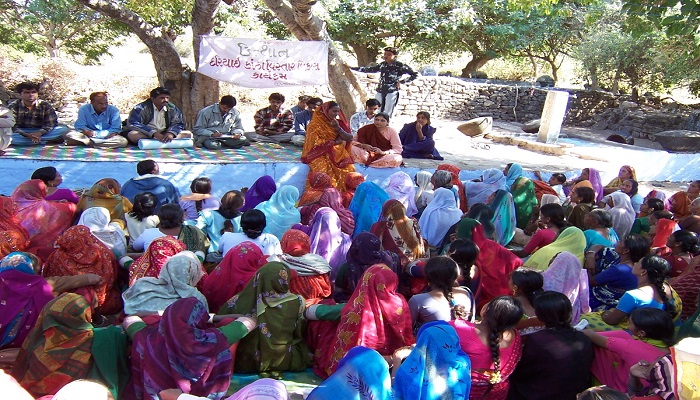
There are women. And then there are real woman. Woman who are not just working towards literacy but towards creating a real value to the society they work in. One such village is Kultikiri located in Sankhrail block of West Bengal’s Paschim Medinipur district. A region once infamous for being the hotbed of Maoist activity, the people of this small hamlet has set a unique precedent – for the last two decades now, they have only voted women into the local Panchayat.
Contrary to what many may assume, Kultikiri has successively elected women into Panchayats because its women leaders have beaten their male counterparts fair and square on the basis of their leadership qualities and a spectacular track record of development.
These days, Anamika Sahoo, a 38-year-old mother-of-two, is at the helm of the village Panchayat. She is a first-time Panchayat member, elected to be the pradhan (head) of a seven-member gram Panchayat.
Talking with pride about Kultikiri’s legacy of grassroots women’s leadership, she proudly says, “Although this has been a woman-ruled Panchayat for the last 20 years, it’s not like the men have not stood for elections. What has worked in favor of women for four consecutive terms is our good work.”
According to local activist Partha Khanra, West Bengal has successfully held regular Panchayat elections for the last 35 years and it is a great model for thriving grassroots democracy.
“In fact, it is the only state in India where even Panchayat elections are a very political affair. Today, however, it is a well-established, successful panchayati raj unit running on its own merit,” he says.
Ever since the women gained control of the Kultikiri panchayat, the 12,000 people who inhabit this village have only prospered.
The literacy levels are generally high – around 70 per cent women and 60 per cent men are educated; and nearly everyone is gainfully employed, thanks to the proper implementation of the central government’s flagship scheme, the Mahatma Gandhi National Rural Employment Guarantee Act (MGNREGA).
Significantly, every woman in Kultikiri enjoys economic independence and is in a position to contribute to the family income. They are either running small village-level enterprises or have joined different Self Help Groups. Pradhan Sahoo, a graduate, also supplements her earnings by taking tuitions.
What Kajal Rawat, 27, the Up-Pradhan (deputy village head), is most satisfied about is the high rate of literacy in her village. “Ours is not just any all-woman Panchayat. We are young, energetic women, who are full of new ideas that can enable our community to grow and flourish.
“The fact that all of us in the Panchayat are well educated has made a big difference. I can confidently say that we do not have a single drop-out from our village,” remarks the youthful leader, who after graduating from a local college now divides her time between her Panchayat duties, her job as a school teacher and taking extra classes for the girls in the village.
Besides Sahoo and Rawat, there’s Pramila Singha, a Panchayat member who is also an ASHA (Accredited Social Health Activist) worker, and Sushama Kisku, 26, another part-time teacher.
All the women take their official work very seriously. Says Kisku, “I go to the panchayat office every afternoon after school. In the evening, I meet up with the Self Help Groups that the Panchayat has helped set up.
“These all-women groups undertake a variety of activities, including integrated farming, bamboo basket-making and puffed rice and bori (sun dried lentil nuggets) making. The stuff they produce or make is sold in the local village market. On our part we also conduct regular weekly village haats (market fairs) to promote fair business practices amongst farmers and cattle breeders.”
It is no wonder then this village was on the news and is thriving.

Post Your Comments